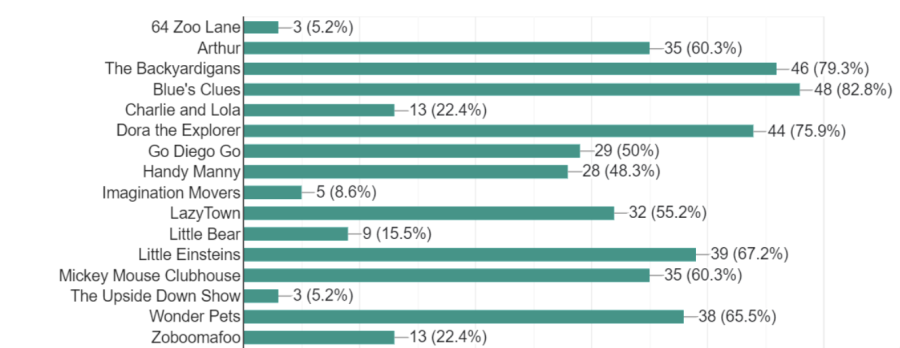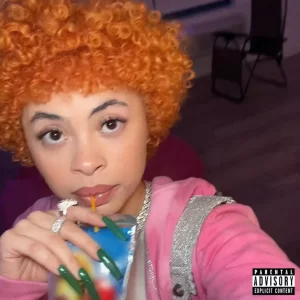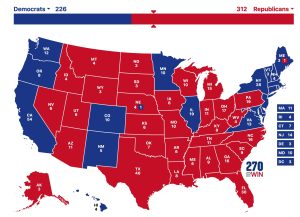Changes in children’s media reflect broader phenomena
Loud, brash, colorful programs beat out laid back formats of years past
“Blue’s Clues” was the most-watched show among respondents to the survey.
October 6, 2022
“Why does this city’s social infrastructure depend on a ten-year-old boy and his six puppies?” I ask over my baby sister’s shoulder. “And do they realize how many of these problems could have been prevented if they had arrested this guy the first time? They literally have a police officer dog!”
I am the eldest of four children. We’re spaced out in age relatively evenly: I am 20 years old and the youngest is turning four in November. I’ve been able to observe the evolution of preschool television programs from when I was that small all the way up to what they televise today. You can imagine the vast amount of opinions that I have generated as a result. They often result in me making comments such as that aforementioned one against shows like “Paw Patrol”. It also results in a visual or verbal reprimand from my mother, much to my chagrin.
Nevertheless, I still enjoy taking jabs at contemporary children’s shows that I find terribly subpar while reminiscing on the shows I grew up with. It’s a humorously passionate topic among myself and my siblings and cousins. But what do you do when you find yourself spending a good amount of your summer looking after your sister while the rest of your family runs errands? It’s just you, her and the annoying characters on the TV. With no one else to talk to, I, unfortunately, became familiar with nearly every show that would play on Nick Jr. and Disney Junior. It was an odd feeling when I moved back onto campus and wasn’t hearing some theme music playing in the background of my activities.
Upon sparking the idea to write an article about this, I initially planned to just talk about my opinions. However, I later realized that it would be an even better idea to gauge the general opinions of our fellow Wake Forest students as well. Even if it’s not a topic we normally discuss, most of us were still raised by the same childhood shows. Thus, a survey was born and was taken by 58 students (including myself), providing me with some interesting results.
The selection of students primarily consisted of juniors, as well as more females than males. Most participants were from my Research Methods in Psychology course. The demographics aren’t ideal, but that was my convenience sample. If these students were a decent enough sample of the Wake Forest student body, then it appears that roughly one-in-three students either has a young relative or babysits a young child who is engrossed in the preschool shows of today. The show that was most reported to be watched by these youth was “Paw Patrol”, decisively. Runners-up included “Peppa Pig”, “Blue’s Clues & You” and “Bubble Guppies”. When students were asked if they actually enjoyed any of the shows the younger kids watched, both “Paw Patrol” and “Wild Kratts” were mentioned a handful of times.
Next, I turned my attention to the shows of our childhood: the early-to-mid 2000s. Out of the 58 participants and the 16 shows I listed — which were inherently difficult to choose — “Blue’s Clues” was the most watched, closely followed by “The Backyardigans” and “Dora the Explorer”. Only about one in every five students reported that they would not want to watch any of their favorite childhood shows again.
The final question on the survey, though, is what left me with a lot to think about. I asked students what they thought of the quality of preschool shows compared from then to now. The majority stated that they had since declined in quality, but some participants left comments detailing their full thoughts. One student described their impression of recent shows as “very loud, bright colors, in your face.” I concur in finding these aspects unappealing — numerous shows’ constant rock music and high-energy animation are a heavy contrast to the storybook illustration styles accompanied by classical or jazz music that you would find in “Little Bear” or “Max & Ruby”. However, one improvement that junior Sam Goodman pointed out was that “shows have gotten a lot more diverse, which is great.”
Some students were more sympathetic to today’s preschool shows. Kendall Obando-Sanchez, a junior, explained that producers of children’s shows probably have to work on lower budgets nowadays: “Back then, preschool shows got a lot of love; now, Roblox takes up preschool kids’ time.” I recalled noticing other adaptations to modern demands. There are now commercials for things like vacuum cleaners and food delivery services instead of exclusively child-oriented short programs. Nick Jr. no longer offers a different show every hour — instead, they spam the same show for three-hour blocks; a reflection of binge-watch culture.
But one other comment made what I thought was a critical point about all of this: “I just think that they are very different from what we used to watch… we do not find them comforting or familiar.”
Perhaps I’m not giving as much credit to these shows as they deserve. I can acknowledge some of their merits after all. Peppa Pig is ridiculously funny — remember the iconic “I can’t whistle” scene? “Blaze and the Monster Machines” might actually help mitigate the widespread fear of physics concepts. I literally run to the television whenever I hear the opening theme song for “Bluey” because I harbor respect for the show that somehow managed to make me cry… three times. What can I say? It has a great script, well-written characters, relatable stories and real emotions — listen, I cannot stress to you enough how much I love this show, probably more than my sister does.
So, this new generation of young viewers may not grow up with the storylines and musical masterpieces of “The Backyardigans” or the comedy gold that was “The Upside Down Show” — and I’m disappointed to see how few of you watched it apparently — but at least we can understand now that the new shows are simply different. What’s more important is that kids are still laughing and learning and hearing good stories, just like the shows that I remember most fondly.














